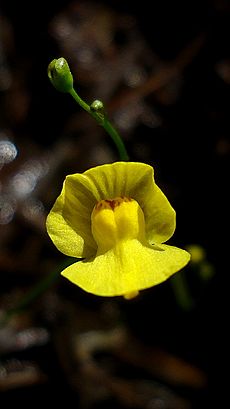Non-coding DNA facts for kids

Non-coding DNA is a special part of an organism's DNA. Think of DNA as a huge instruction book for building and running a living thing. Most of this book contains instructions (called genes) that tell cells how to make proteins. Proteins are like tiny machines that do almost all the work in your body.
However, non-coding DNA does not carry instructions for making proteins. It's like the parts of a book that aren't the main story, but are still important, like the table of contents, chapter titles, or blank pages between sections.
Some non-coding DNA is very active. It gets copied into special molecules called non-coding RNA. These RNA molecules don't make proteins, but they have other important jobs. For example, some help build parts of the cell, while others act like tiny switches that turn genes on or off.
The amount of non-coding DNA is very different from one living thing to another. For example, over 98% of the human genome (all our DNA) is non-coding. But in tiny bacteria, only about 2% of their DNA is non-coding.
What is "Junk DNA"?
For a long time, scientists didn't know what most non-coding DNA did. Because of this, some people started calling it "junk DNA", especially in the news. They thought it was just leftover DNA that didn't have a purpose.
However, we now know that many non-coding DNA parts are very important. They include the genes for those helpful non-coding RNA molecules we talked about. Other parts act like special signals that tell DNA where to start copying itself. There are also parts called centromeres and telomeres, which are vital for keeping our chromosomes stable and healthy.
Scientists are still learning about other non-coding sequences. They believe many more have important jobs that we haven't discovered yet. This is because these sequences are very similar in different species, which suggests they are important and have been kept through evolution.
The ENCODE Project
In 2012, a big science project called the Encyclopedia of DNA Elements (ENCODE) suggested something exciting. They said that over 80% of the DNA in the human genome "serves some purpose." This means that most of what was once called "junk DNA" might actually be doing something important for our bodies.
However, not all scientists agreed with this conclusion. The study sparked a lot of discussion and research. Scientists continue to explore the mysteries of non-coding DNA to fully understand its many roles in life.
See also
 In Spanish: ADN no codificante para niños
In Spanish: ADN no codificante para niños

